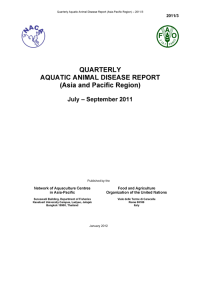Subba Rao presents on the role of hatchery operators in scaling up better management practices for shrimp aquaculture in India.
Udayaramjothy presents on the role of industry in scaling up better management practices for shrimp aquaculture in India.
Ken Corpron presents on the role of certification in scaling up the national programme on better management practices for shrimp aquaculture in India.
Better management practices have proved to be a highly effective tool for the Indian shrimp farming industry. Work to extend adoption of the practices is ongoing and in this view a national workshop was held in Chennai, 16-18 May 2011 at the Central Institute of Brackishwater Aquaculture to discuss scaling up strategies, to extend the concept to new areas and to involve more farmers and identify lessons learned that can be applied elsewhere.
